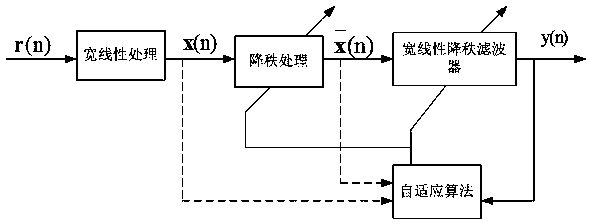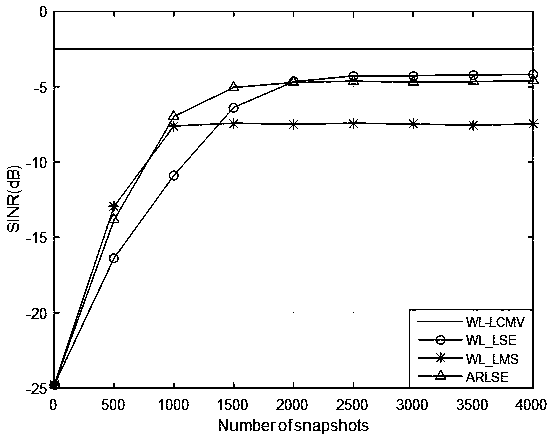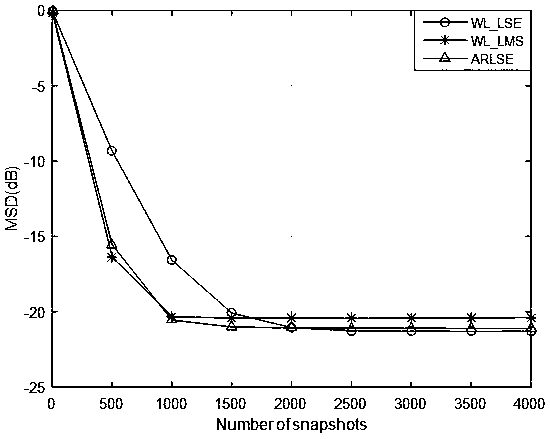Gaussian entropy criterion-based self-adaptive reduced-rank beamforming method
An adaptive and rank-reducing technology, which is applied in space transmit diversity, radio transmission systems, electrical components, etc., can solve the problems of increasing algorithm convergence speed, reducing algorithm complexity, and high performance complexity, achieving reduced complexity and reduced The effect of increasing the amount of calculation and output SINR
- Summary
- Abstract
- Description
- Claims
- Application Information
AI Technical Summary
Problems solved by technology
Method used
Image
Examples
Embodiment 1
[0073] Embodiment 1: The incident direction of the desired signal is 40°, and the incident directions of the two disturbances are 20° and 65° respectively. Their center frequencies are 15.48MHz, 12.58MHz and 17.48MHz respectively. The values of SNR and SIR are both -20dB. Performing 500 independent experiments, we get as figure 2 The change curve of the output SINR with the number of snapshots shown and image 3 The change curve of MSD with the number of snapshots shown;
[0074] As can be seen from the simulation results, the curve corresponding to the method (Augmented Reduced-rank Least Stochastic Entropy, ARLSE method) proposed by the present invention is compared with the curve corresponding to the WL-LSE algorithm, and its convergence speed has been significantly improved; From the curves corresponding to the two algorithms LSE and WL-LMS, it is not difficult to see that the output SINR of the algorithm based on the Gaussian entropy criterion is significantly great...
Embodiment 2
[0075] Embodiment 2: The incident direction of the desired signal is 40°, and the incident directions of the two disturbances are 20° and 65° respectively. Their center frequencies are 15.48MHz, 12.58MHz and 17.48MHz respectively. The value of SIR is -20dB. Performing 500 independent experiments, we get as Figure 4 The output SINR vs. SNR curve is shown.
PUM
 Login to View More
Login to View More Abstract
Description
Claims
Application Information
 Login to View More
Login to View More - R&D
- Intellectual Property
- Life Sciences
- Materials
- Tech Scout
- Unparalleled Data Quality
- Higher Quality Content
- 60% Fewer Hallucinations
Browse by: Latest US Patents, China's latest patents, Technical Efficacy Thesaurus, Application Domain, Technology Topic, Popular Technical Reports.
© 2025 PatSnap. All rights reserved.Legal|Privacy policy|Modern Slavery Act Transparency Statement|Sitemap|About US| Contact US: help@patsnap.com



